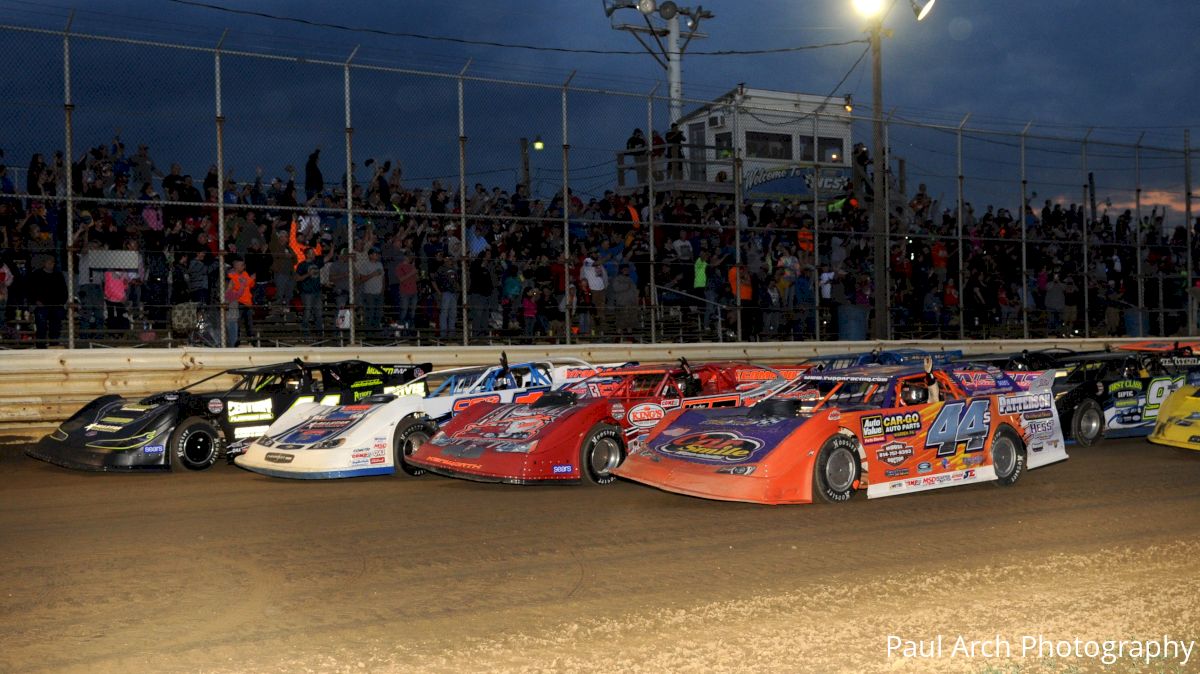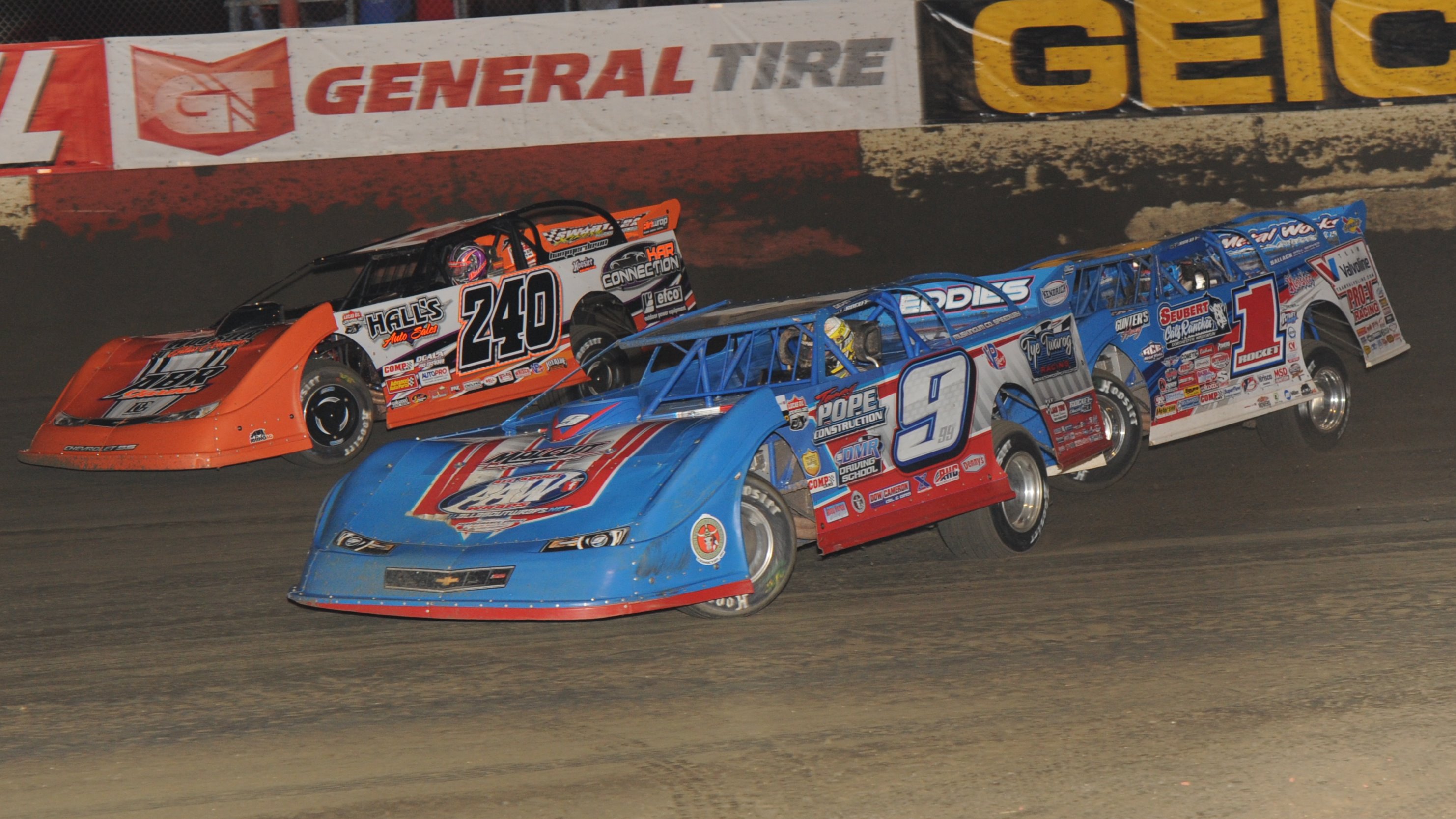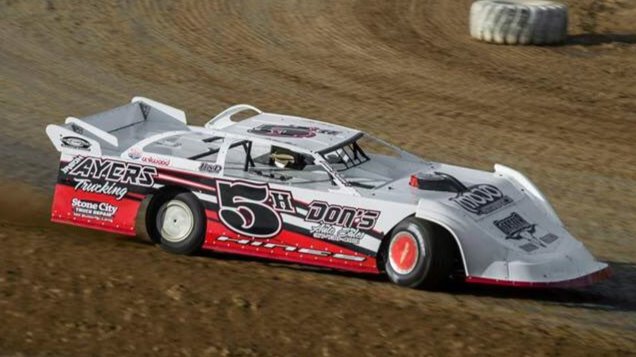The Making Of A Late Model Crown Jewel Takes Time And Devotion
The Making Of A Late Model Crown Jewel Takes Time And Devotion
We all know what a crown jewel is in late model racing, but what are the factors that make it so?

By Jonathon Masters
"Crown Jewel" is a term the racing world has come to equate with annual races of importance on dirt tracks. Every racer worth his salt wants to win these events. Fans flock to them by the thousands.
We can all name races generally known as crown jewel events. The World 100, the Knoxville Nationals, the Show-Me 100, the Dirt Track World Championship, and many more races across the country are widely considered crown jewels. But how do these races achieve that status? How do they separate themselves from a standard big money event?
I grew up in Jackson County, Indiana, and to me the Jackson 100 is still the most important race of the year. But if you go to Maryland, most people have never heard or care about the 38-year-old event at Brownstown Speedway. The race will always be a cherished event to those of us in the Midwest, but it was once known as a crown jewel by most of the dirt racers in the country. What changed?
One thing that changed is the date of the event. When it comes to crown jewel events, we seem to place a lot of importance on dates. The distribution of crown jewel events seems to require spreading the races throughout the year in relation to one another.
Late model dirt track fans also like the season weighted somewhat toward the last three months of the season. An event such as the Show-Me 100 at Lucas Oil Speedway in Wheatland, MO, gained its crown jewel status by positioning itself on a holiday weekend early in the season. It is widely known as the first major event of the season. It also carries the distinction of being the biggest dirt late model event in Missouri.
Formerly, the Jackson 100 was placed before the biggest crown jewel event of the season, the World 100 at Eldora Speedway in Rossburg, OH. The Jackson, along with Florence Speedway's North South 100, was often considered part of a three-step road ending at Eldora. The slick surfaces and shape of the three tracks could often serve as a prediction for who would run well at Eldora.

However, series scheduling altered race dates, and once the order of these races moved around, it left the Jackson 100 in late September after the World 100.
The changing of race dates and prestige to accommodate a national series schedule has become commonplace, and it has had a big impact on how we as an industry and fans place importance on races. From the late 1980s through the early 2000s, there was often only one race series in late models that could be considered national--the HAV-A-TAMPA series.
Even when we had HAV-A-TAMPA and STARS running at the same time, it was only HAV-A-TAMPA that could be considered truly national as we know it today. STARS was a fantastic series but was mainly a Midwest affair with a few events down south in the early and late months of the season. Track promoters didn't feel there was a need to bow to this series or coordinate with it. In those regions, they could get almost all of the top stars to show up to their events simply by having the races and paying well. Today, an independent event is not able to attract big-name drivers without a series sanction attached to it, especially if you are scheduling against either national touring series.
A talk about what makes a crown jewel wouldn't be complete without touching on the payout.
Big money can help turn an event into a crown jewel. The Dream 100 at Eldora Speedway is the perfect example. The major payday of $100,000 was enough to turn the race into a crown jewel back in 1994, and it continues to carry that reputation today.
Of course, money alone cannot make a race truly matter. How many races have we seen come and go over the past 20 years that had stout paydays but still did not stand the test of time? Look at The Dirt Track at Charlotte's first attempt at a crown jewel event, "The Colossal 100." It was a great payday at a fantastic track, but for some reason it just wouldn't take. It struggled at the gate and didn't create the feeling of importance a crown jewel requires.
Charlotte tried again with "The World Finals" for the World of Outlaws Late Model Series and succeeded. So what was the secret to its success? The World Finals feels like an event and not just a race, and that is the secret to creating a crown jewel.
In today's late model schedule, bigger payouts are normal. Can't make this week's 100-lap, $20,000-to-win event? That's OK; there will be one next week. You have to create the atmosphere of importance and fun. Knoxville Raceway is an expert at this. It took some years of buildup, but the Knoxville Late Model Nationals is now widely considered a crown jewel. It is also the biggest late model race in its state just like many of the others we have named.

That brings us back to the Jackson 100 at Brownstown. It's the biggest late model event in Indiana, and to many it feels like an event. So why has it struggled to maintain crown jewel status?
Well, it hasn't. It will always be the most important race of the year to many Midwesterners, just as the Blue/Gray at Cherokee in South Carolina or the Winchester 200 in Virginia will always be important to their areas.
What makes a race matter is the joy it brings the fans to attend and the racers to compete in it. Indiana drivers will always feel that swell of pride for the Jackson 100. As long as kids in the stands are mesmerized by the sounds of the engines and the drivers holding trophies high, the events will always matter. It is impossible to completely manufacture a crown jewel event. You can slap a $50,000 payday and talk about it being a big event all you want, but making a race matter comes with time and care.
- Jonathon Masters has a lifelong connection with dirt racing. His family has owned and operated MasterSbilt Race Cars manufacturing dirt late model chassis for 35 years. He attended college in North Carolina for motor sports management and has written for various industry publications. Masters was an account executive at The International Motorsports Industry Show, is the founder of the Heartland Auto Racing Show, and has been a racing industry professional for over a decade.
Good Men Are Hard To Find For A National Tour []
All It Takes To Run A National Tour Is Guts, Talent, And A Half-Million []
Steve Casebolt Moves to Jim Beeman Motorsports []
Engagement Is One Key To Dirt Racing's Success And NASCAR's Decline []
Memorial Day Is Christmas For Race Fans
For Ryan Blaney The Future Is Now And It's A Bright One
Change What Matters Most In The All-star race
The Changing Of NASCAR's Guard
"Crown Jewel" is a term the racing world has come to equate with annual races of importance on dirt tracks. Every racer worth his salt wants to win these events. Fans flock to them by the thousands.
We can all name races generally known as crown jewel events. The World 100, the Knoxville Nationals, the Show-Me 100, the Dirt Track World Championship, and many more races across the country are widely considered crown jewels. But how do these races achieve that status? How do they separate themselves from a standard big money event?
I grew up in Jackson County, Indiana, and to me the Jackson 100 is still the most important race of the year. But if you go to Maryland, most people have never heard or care about the 38-year-old event at Brownstown Speedway. The race will always be a cherished event to those of us in the Midwest, but it was once known as a crown jewel by most of the dirt racers in the country. What changed?
One thing that changed is the date of the event. When it comes to crown jewel events, we seem to place a lot of importance on dates. The distribution of crown jewel events seems to require spreading the races throughout the year in relation to one another.
Late model dirt track fans also like the season weighted somewhat toward the last three months of the season. An event such as the Show-Me 100 at Lucas Oil Speedway in Wheatland, MO, gained its crown jewel status by positioning itself on a holiday weekend early in the season. It is widely known as the first major event of the season. It also carries the distinction of being the biggest dirt late model event in Missouri.
Formerly, the Jackson 100 was placed before the biggest crown jewel event of the season, the World 100 at Eldora Speedway in Rossburg, OH. The Jackson, along with Florence Speedway's North South 100, was often considered part of a three-step road ending at Eldora. The slick surfaces and shape of the three tracks could often serve as a prediction for who would run well at Eldora.

However, series scheduling altered race dates, and once the order of these races moved around, it left the Jackson 100 in late September after the World 100.
The changing of race dates and prestige to accommodate a national series schedule has become commonplace, and it has had a big impact on how we as an industry and fans place importance on races. From the late 1980s through the early 2000s, there was often only one race series in late models that could be considered national--the HAV-A-TAMPA series.
Even when we had HAV-A-TAMPA and STARS running at the same time, it was only HAV-A-TAMPA that could be considered truly national as we know it today. STARS was a fantastic series but was mainly a Midwest affair with a few events down south in the early and late months of the season. Track promoters didn't feel there was a need to bow to this series or coordinate with it. In those regions, they could get almost all of the top stars to show up to their events simply by having the races and paying well. Today, an independent event is not able to attract big-name drivers without a series sanction attached to it, especially if you are scheduling against either national touring series.
A talk about what makes a crown jewel wouldn't be complete without touching on the payout.
Big money can help turn an event into a crown jewel. The Dream 100 at Eldora Speedway is the perfect example. The major payday of $100,000 was enough to turn the race into a crown jewel back in 1994, and it continues to carry that reputation today.
Of course, money alone cannot make a race truly matter. How many races have we seen come and go over the past 20 years that had stout paydays but still did not stand the test of time? Look at The Dirt Track at Charlotte's first attempt at a crown jewel event, "The Colossal 100." It was a great payday at a fantastic track, but for some reason it just wouldn't take. It struggled at the gate and didn't create the feeling of importance a crown jewel requires.
Charlotte tried again with "The World Finals" for the World of Outlaws Late Model Series and succeeded. So what was the secret to its success? The World Finals feels like an event and not just a race, and that is the secret to creating a crown jewel.
In today's late model schedule, bigger payouts are normal. Can't make this week's 100-lap, $20,000-to-win event? That's OK; there will be one next week. You have to create the atmosphere of importance and fun. Knoxville Raceway is an expert at this. It took some years of buildup, but the Knoxville Late Model Nationals is now widely considered a crown jewel. It is also the biggest late model race in its state just like many of the others we have named.

That brings us back to the Jackson 100 at Brownstown. It's the biggest late model event in Indiana, and to many it feels like an event. So why has it struggled to maintain crown jewel status?
Well, it hasn't. It will always be the most important race of the year to many Midwesterners, just as the Blue/Gray at Cherokee in South Carolina or the Winchester 200 in Virginia will always be important to their areas.
What makes a race matter is the joy it brings the fans to attend and the racers to compete in it. Indiana drivers will always feel that swell of pride for the Jackson 100. As long as kids in the stands are mesmerized by the sounds of the engines and the drivers holding trophies high, the events will always matter. It is impossible to completely manufacture a crown jewel event. You can slap a $50,000 payday and talk about it being a big event all you want, but making a race matter comes with time and care.
- Jonathon Masters has a lifelong connection with dirt racing. His family has owned and operated MasterSbilt Race Cars manufacturing dirt late model chassis for 35 years. He attended college in North Carolina for motor sports management and has written for various industry publications. Masters was an account executive at The International Motorsports Industry Show, is the founder of the Heartland Auto Racing Show, and has been a racing industry professional for over a decade.
Exclusive Content
Weekly Columns by Jonathon Masters
The Driving Desire to Win []Good Men Are Hard To Find For A National Tour []
All It Takes To Run A National Tour Is Guts, Talent, And A Half-Million []
Steve Casebolt Moves to Jim Beeman Motorsports []
Engagement Is One Key To Dirt Racing's Success And NASCAR's Decline []
Weekly Columns by JD Hellman
Daniel Suarez Translates Opportunity Into SuccessMemorial Day Is Christmas For Race Fans
For Ryan Blaney The Future Is Now And It's A Bright One
Change What Matters Most In The All-star race
The Changing Of NASCAR's Guard